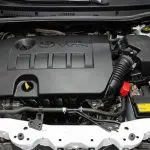It is no secret that the CRV is Honda’s top SUV. It has been in commercial use since 1997 and shows no signs of slowing down, currently in its fifth generation.
However, it hasn’t been smooth sailing during all this time.
If you are wondering what are the best and worst years for Honda CRV then read the below list:
Worst Years for Honda CRV
- 1997
- 2002
- 2003
- 2007
- 2009
Best Years for Honda CRV
- 2001
- 2006
- 2015
- 2016
- 2021
TABLE OF CONTENTS
What Are The Worst Years For The Honda CR-V?
Even though the Honda CRV has proven to be a reliable SUV that can last a family for a good enough time, there were some years when a model of this car was released, that just did not live up to the standard people expected of it:
1. 1997
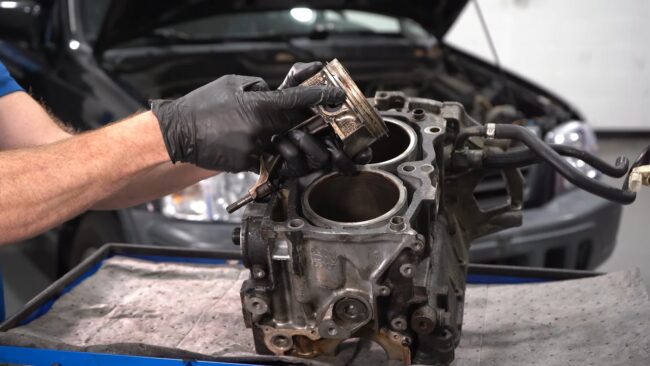
This may sound a bit harsh, considering this was the year the Honda CRV was released, but that is exactly why it is on the worst year list.
There were still major issues with certain parts of the engine. It was kind of like a beta test for the car, and thus it wasn’t a good move to buy this newly released car in its first year.
You might say that this year should get a pass, but that’s hard to do when there are major engine problems people are complaining about.
2. 2002
This was the only model in its generation to be released after redesigning. Its main issue lies with its Air Conditioning. People complained that the AC released hot air and debris on certain occasions.
Apart from that, the door actuator also failed quite a lot for a car of this standard, causing the doors to not be properly locked or unlocked.
3. 2003

This 2003 Honda CR-V year model carried over the problems from its previous version, meaning that the AC and door actuators were still not properly working.
However, a new problem arose in this model: the engine sometimes would overheat. And this engine overheating problem got progressively worse throughout the car’s lifetime.
This would affect the long drives of this car, resulting in families not taking it for their trips anymore, which goes against the purpose of why this car was created in the first place.
4. 2007
This was probably the worst year for the Honda CRV. It not only was a disastrous start to the 3rd generation of CRVs, but also it started the worst overall generation of CRVs.
Honda majorly changed up the design of the car, mainly dropping the rear-mounted spare tire. This led to a major loss of drive appeal from the general public. Even families disliked it.
Furthermore, it was one of the least reliable cars out there. The door actuators continued to be a menace, even more so this time, as the doors would become harder to lock and unlock.
Alongside this was the airbag, which sometimes didn’t inflate properly due to the steering fluid’s leakage.
This, instead of saving people in the case of a car crash, still has a potential chance of killing them.
5. 2009

It carries the same general problems as any other 3rd generation Honda CRV. However, it particularly had the problem of prolonged and slowed acceleration.
Going from 0 to 60 mph took about 10 seconds, which is a pretty long time for car standards, especially for cars of this category.
This caused a real issue, especially when stopping at traffic lights.
In addition, the brake sometimes would cause the opposite effect of what it is desired to do and speed the car up.
This caused numerous accidents and was a hazardous fault of this particular model of the Honda CRV.
Related: Where Are Honda CR-Vs Made?
What Are The Best Years For The Honda CR-V?
This car has had multiple great years for itself. Given that this is one of the top SUVs ever made, that is not and should not be too surprising.
1. 2001
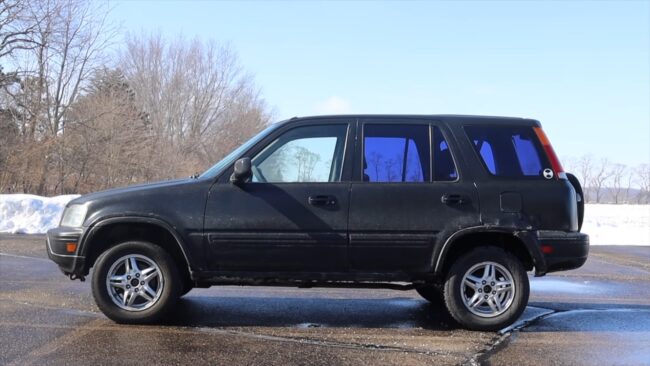
As part of the 1st generation of Honda CRV, this 2001 year model automatically became responsible for setting the new standard for SUVs, especially family-oriented ones.
It had a B2OZ engine that could produce 144 horsepower worth of power. It also was able to add traction from the front to the rear wheel interactions.
This allowed the car to easily keep up with local traffic while providing the driver with one of the smoothest driving experiences they could have ever felt.
2. 2006

The 2nd generation cars were a great improvement over their predecessors, which were capped off with the last car in this generation in 2006.
This was an extremely fuel-efficient car, giving a mileage of up to 23 mph in the city and 29 mph on the highway.
For long trips, its spacious interior made this car perfect for long trips with family and friends.
It was also an overall better car in terms of handling noise, vibration, and hardness, leading to a better experience for the driver and passengers.
3. 2015
The 2015 Honda CRV year model gained 3 mpg because Honda put Accord’s direct-injected “Earth Dreams” in it with a continuously variable transmission.
It had and used the new engine at the time: a 3.4L four-cylinder engine. Apart from this, some major design improvements were made like heated front seats, a seven-speaker sound system, etc.
4. 2016
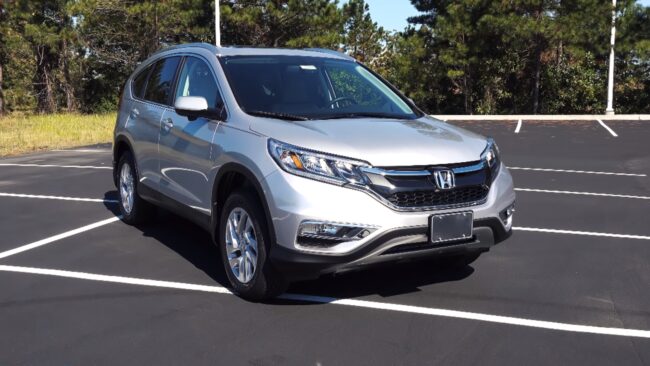
Like the previous version, this car also had design improvements. However, that was not all.
It not only had an improved 2.4L four-cylinder engine, but it also had smoother brakes that were much more responsive and snappier, making driving a much safer experience.
Lastly, don’t get fooled by its smaller size, as it can pack a lot of cargo.
5. 2021
The latest Honda CR-V is the most expensive of the bunch. However, it is worth every penny it is billed at.
It is said to be the best SUV a family can buy, considering the main objective of the CRV was to make a family-friendly SUV. I would say this model has been a success.
It has numerous cool features like a 7-inch large screen, hands-free tailgate, sunroof, power driver, and passenger seat.
The list goes on. Four trims are offered: LX, EX, EX-L, and Touring. It also has Honda Sensing, which brings with it the auto brake.
That is applied in the case of an emergency if the driver fails to apply the brakes in time. Considering all the features and upgrades, the price is reasonable as well.
How Long Does Honda CR-Vs Last?
The Honda CRV is not only reliable but also durable. As mentioned previously, it is not uncommon for these cars to be in peak performance years after they are put on the road.
Of course, this depends on how the owners maintain the car and how the car is driven.
Some people do not take as good care of their vehicles as others, leading to the breaking down of said vehicles way earlier than their actual lifetime.
However, if you manage to keep your CRV in good condition, it can last you for up to 200,000 to 300,000 miles.
This is around a 16-to-20-year life expectancy, which is top-notch for any car.
Thus if proper care is taken of this car; (with some tips on how to do that explained in the next part), it will be able to last its owner(s) potentially a lifetime.
What To Do To Lengthen The Life Of Your Car?
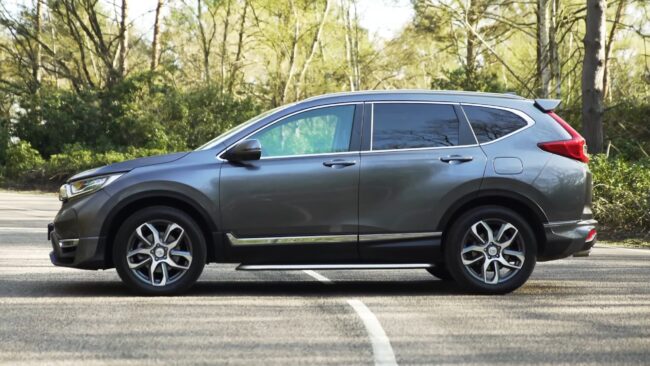
No matter how good a vehicle is, it will break down if proper steps are not taken. That is why maintenance is so important, especially for cars.
For a Honda CRV, there are a few tips and tricks to improve and increase its lifetime usage:
- Changing Engine Oil Regularly: Depending on how much the car is driven, its oil must be changed after it has traveled a certain distance.
- Replacing Air Filters: Changing and replacing the air filters at least once a year is a good way to prevent dust and debris from getting into the engine and hampering its performance.
- Flushing The Transmission: Like oil changes, old automatic transmission fluid occasionally must be removed and replaced with fresh fluid. This is essential to maintain the car’s transmission system and should ideally be done at least once every two years.
- Tire Changing: The tires of every car need to be changed. They are made of rubber, so the friction causes them to wear out. Replacing them after some time is important to keep the car for as long as possible.
Things That Shorten The Lifespan Of Your Honda CR-V
People have numerous bad habits when it comes to the maintenance of their cars.
Just like there are steps we can take to increase the lifespan of vehicles, the opposite can also happen, in that people can do certain things that decrease the car’s lifespan.
- Driving Roughly: Screeching the tires, applying the brakes too fast, accelerating too quickly and suddenly, etc., are all things people do while driving that can reduce the lifespan of the CRV.
- Bad Road Conditions: If the car is constantly being driven in areas with roads that are not in the best of conditions, it will get worn down.
The same is the case with CRV tires. They will get worn out quicker if they are constantly exposed to bumpy roads with poorly maintained potholes. - Improper Tire Alignment: Inappropriate tire alignment can lead to very disastrous results like a car crash.
Even if it does not come to that, the strain on the tires will not only cause them to become worn out quicker, but also it will cause more fuel consumption, which, as we know in this economy, gas prices are something that you should be keen to avoid. - Not Properly Servicing Your Car: People tend to have poor servicing standards. This can, over time, lead to the car being broken down early in its life.
Timely repairs and servicing of the car are pertinent, and without such, you are risking shortening the lifespan of the CRV by a great deal.
Potential Problems
1. Actuator
This problem has been with the Honda CR-V since 2003. Even though the situation has improved and the severity of the problem has decreased, it persists.
An actuator is a device that converts energy into a physical force. The actuators used for locking and unlocking the door are the ones that give some trouble.
2. Engine Overheating
The engine is the most important piece of a vehicle.
Since it works by making numerous pistons and motors and drives the energy around the car, it produces heat. This heat is cooled by the engine itself too.
However, in the Honda CRV, that cooling process is not always effective. Sometimes the engine overheats, especially if it has been used continuously for long periods.
3. Airbag Inflation
Sometimes the airbag fails to open properly in case of a crash. This happens because sometimes the steering fluid leaks.
So, in the event of a crash, there is not enough fluid for the airbag to inflate properly.
This was more common in the 3rd generation of CRV models, which were made from 2007 to 2011, and since then, the problem has decreased a lot, but it still lingers on even in some of the later models produced.
FAQs
What Are the Typical Maintenance Costs for Honda CR-Vs in Their Best Years?
The typical maintenance costs for Honda CR-Vs in their best years can vary, but on average, an oil change ranges from $35 to $75, tire rotation between $20 and $50, brake pad replacement from $150 to $300 per axle, air filter replacement around $40 to $70, battery replacement between $75 and $200, and a coolant flush approximately $100 to $150.
These costs are estimates and can differ based on location, the specific model year, and the service provider. For the most accurate information, it’s advisable to consult a local Honda dealership or a trusted automotive service center.
How Does the Fuel Efficiency of Honda CR-Vs Compare Across Different Generations?
Fuel efficiency in these cars has improved significantly over different generations. For instance, the 2006 model was known for its fuel efficiency, offering up to 23 mpg in the city and 29 mpg on the highway. Later models, like the 2015 and 2016 CR-Vs, continued this trend with even better fuel economy due to advancements in engine technology and design.
Are There Any Specific Driving Conditions That Honda CR-Vs Excel In?
Honda CR-Vs, particularly in their best years, are known for their versatility and perform well in a variety of driving conditions. They are well-suited for city driving due to their compact size and fuel efficiency, while also being capable of handling mild off-road conditions and long-distance highway travel, thanks to their comfortable interiors and reliable performance.
What Safety Features Have Been Consistently Praised in the Best Years of Honda CR-V?
Safety features such as advanced airbag systems, anti-lock braking systems (ABS), and stability control have been consistently praised. The 2021 model, for example, includes Honda Sensing, a suite of safety and driver-assistive technologies, that enhance the vehicle’s safety profile.
How Do the Interiors of the Best Year Models of Honda CR-V Compare in Terms of Comfort and Technology?
The interiors of the best-year models of Honda CR-V, such as the 2016 and 2021 models, are known for their comfort and advanced technology. These models often feature spacious interiors, comfortable seating, climate control, and modern infotainment systems with connectivity options, providing a pleasant driving experience.
Summary
Honda CR-V is one of the best, if not the best, compact SUVs out there. It has almost everything that such a car could have that a family could want.
It provides great value for its price and is easy to resell for up to 82% of its value. However, that does not mean it has always been smooth sailing.
As I have discussed the 5 best and worst years for the Honda CRV, there have been some failures along the way.
But that only helped make this car the best compact family-oriented SUV ever in the long run.
References:
https://caredge.com/honda/cr-v/depreciation
https://enginepatrol.com/honda-crv-facts-statistics/




